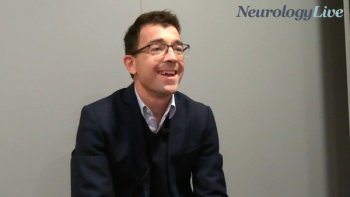
Managing Relapses in Patients With Multiple Sclerosis
Dr Darin Okuda discusses strategies for treatment selection and management of relapses in multiple sclerosis.
Episodes in this series

Darin Okuda, MD: Regarding the best treatment or the best approach for the management of patients, and in the context of therapy, we somewhat joke that therapy is covered by a third-party administrator. That’s part of real life now. I think that beyond that one of the most important things is to find a medicine that works nicely within a person’s lifestyle. Of course, pills are seen to be more attractive than injectables. Treatments that have certain patterns of use may be more ideal for certain individuals to remain in compliance, so there are a number of key factors. How compliant can a person be? How adherent? These aspects really are meaningful in an ideal outcome when it comes to managing multiple sclerosis.
Regarding the strategies for management if relapses are present, or a clinical relapse is present, or if MRI advancement is also observed—it could be a T2 lesion that’s enlarging, or it could be the presence of contrast enhancement with the new commercial tools, as well as brain atrophy—if we see such changes—a clinical relapse, a patient reporting that there is neurological progression or documented evidence of that by our examination in-house, beyond the MRI—one of the first things that I’ll do is enquire if that individual is taking the medicine in general.
There are many people that decide not to take their therapy because of a variety of reasons. Perhaps they couldn’t afford treatment, or they have concerns about COVID-19 or the COVID-19 vaccines. And then there is the aspect of taking it as prescribed, so we want to make sure that people are taking their treatments the right way before we make recommendations for perhaps a treatment change.
What’s fascinating in our field, and we don’t have this answer yet, is that we are at this bifurcation in the road where we don’t know if starting someone out with the best-in-class, high-efficacy treatment category is the best move for that person or if we should take a stepwise approach to the management or use of the therapy that falls outside of this high-efficacy group. It’s not just a matter of how effective this treatment is, it’s also a matter of whether adverse effects are in balance with the benefits that it could afford to a person with multiple sclerosis.
I think right now we try to do the best that we can. I like to think that our recommendations are tailored to each individual after interviewing them, examining them, understanding what their risk profile is, and then making a treatment choice based on the data gathered.
With respect to disease surveillance, my bias is always towards magnetic resonance imaging because it’s a wonderful tool. It does not expose a person to radiation like a CT scan, x-ray, dental x-ray, or a PET [positron emission tomography] scan, and what is really great about an MRI is that it is very accessible to people with multiple sclerosis. MRI relapses outnumber clinical relapses by 10 to 1. One can think of an MRI scan as being similar to a blood pressure assessment that’s performed in an internist or family medicine practice office. They check your blood pressure, which may be high, but you feel like you are 24 years old even though you’re 46 years old, and they monitor you.
And it’s the same with an MRI scan. They are very sensitive, and more often than not we do pick up relapses on imaging, yet people feel 100% normal. Those smoke signals—when we see MRI advancement—is important because it speaks to a lack of disease control, and when they are observed may be the ideal time to start to have these conversations with our patients to understand what’s going on in their lives, because too often we think of drug access as not working for the patient, and it may not be that. People have things that happen in life, and COVID-19 has really created a wealth of challenges for us. I think looking beyond imaging is also very important to try to understand what may be going on in the lives of people with MS that we are caring for.
Transcript edited for clarity
Newsletter
Keep your finger on the pulse of neurology—subscribe to NeurologyLive for expert interviews, new data, and breakthrough treatment updates.








































